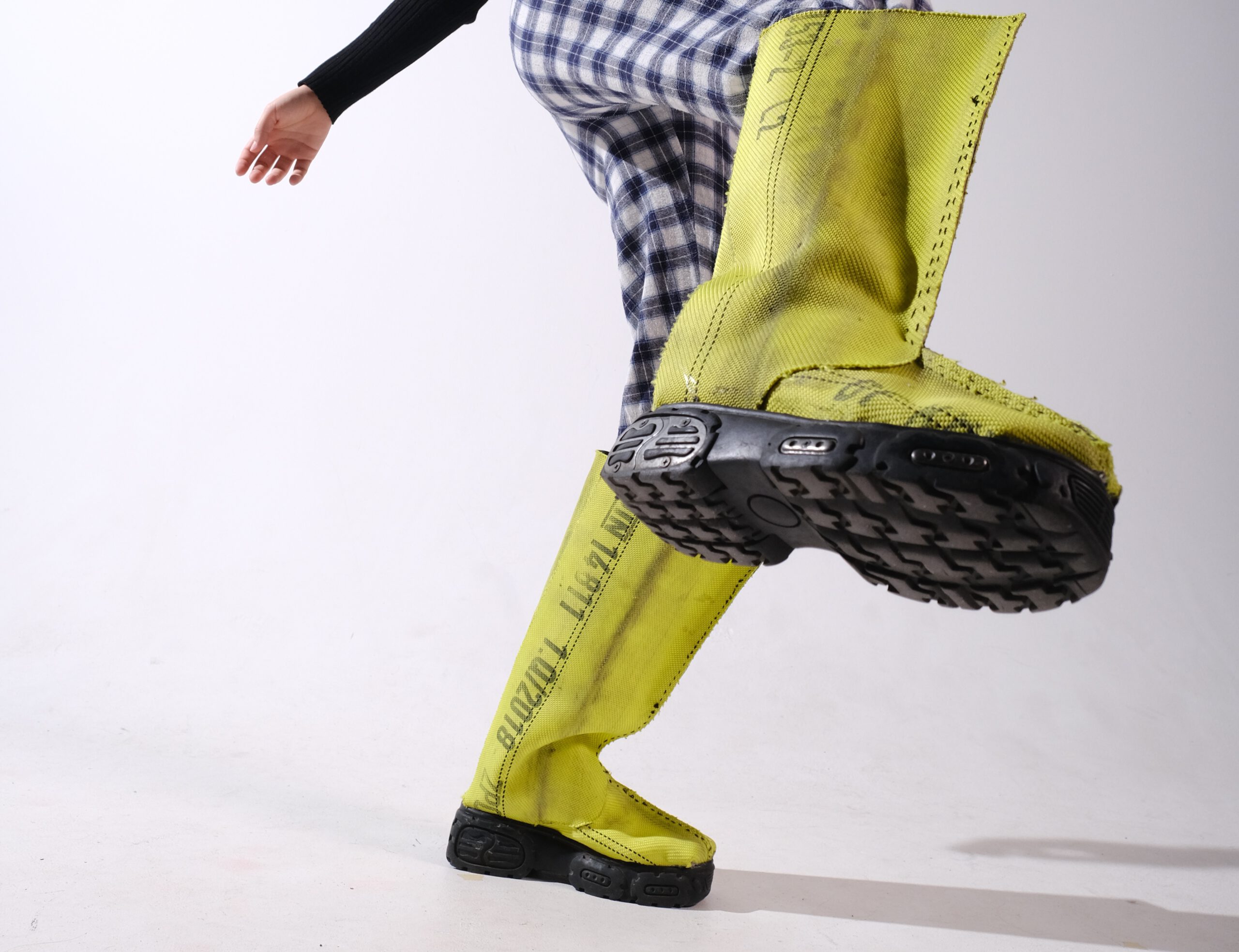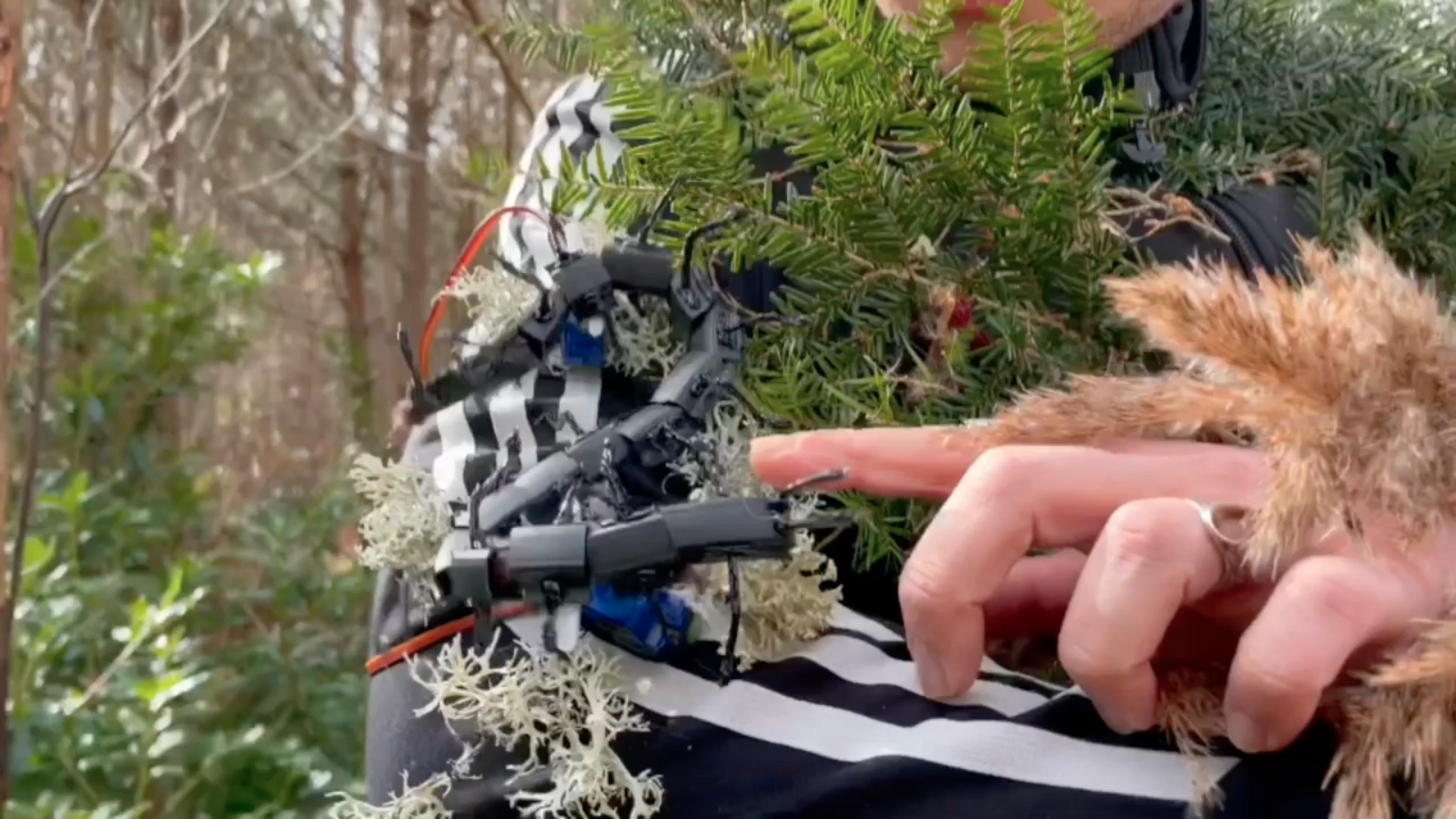About
TILL HEIN (*00) IS AN INTERDISCIPLINARY DESIGNER FROM COLOGNE WITH A STRONG FOCUS ON INTEGRATED DESIGN. DURING HIS STUDIES AT THE COLOGNE INTERNATIONAL SCHOOL OF DESIGN, HE INTERNALIZED DESIGN AS A SOCIAL AND CULTURAL PROCESS, AND TOOL FOR COMMUNICATION.
CONVINCED OF THE IMPACT THAT SOLUTION-ORIENTED DESIGN HAS ON SOCIETY AND THE ENVIRONMENT, HIS DESIGNS ARE GROUNDED IN SUSTAINABILITY AND STRIVE FOR INNOVATION AND CHANGE. THIS APPROACH LED TO HIS ALARM RUBBER BOOT WINNING THE GLOBAL FOOTWEAR AWARD IN THE SUSTAINABILITY & RECYCLED MATERIALS CATEGORY IN 2023.
THIS PORTFOLIO SHOWS A SELCTION OF HIS WORK, PARTICULARLY IN THE FIELDS OF
FASHION, PRODUCT, AND INTERACTION DESIGN.

Communication in Fashion
The performative outfit was created as part of the self-initiated project EMERGING THREADS. Based on interviews with refugees, the outfit addresses the partial loss of cultural identity and the emotional baggage of displaced people. The armored modular carrying system also offers a constructive solution for situations of sudden escape and panicked crowds. The upcycled organic materials and the cut of the dress are based on traditional European garments, transferred into a dystopian, futuristic context to address the fragility of European cultures in the face of impending disasters. with the help of digital prototyping in Clo3D, the cut was developed in a more resource-efficient way.

Material Research
An exploration of our perception of materials as waste after an object has served its purpose: ‚The Alarm Rubber Boot‘ is an investigation into the use of the highly technical yet wasted materials of fire hoses. Speculating on future climate scenarios where forest fires will become more frequent and therefore more material will be used, the design can be applied to related scenarios of flooding.
Using vulcanised rubber nylon mesh, the material offers greater durability and protection compared to existing rubber boots, while improving sustainability in both scenarios.

Social Constructions in Workwear
Starting with workwear as a recent fashion trend, this outfit is a deeper Investigation of The historical classification of work, represented by clothing as a social construct. It combines strongly contrasting workwear: the elegant and smart business suit with the denim overall of the blue-collar worker. The extended lapel of the ‚SMOKING HOT OVERALL‘ is the connecting link of the transformative clothing. As an apron, it offers protection from dangerous metalwork. Placed over the shoulders, it hides the dirt and creates a traditional costume with an elegant silhouette. The suit is currently being further developed in response to requests from craftsmen in Cologne.

Interactions through Textile and Technology
The collaborative workshop in the Scottish Highlands challenged us students to question the relationship between humans, nature, and technology. By combining Arduino technology, textiles, and natural materials, we created a wearable interaction that allows the user to feel like a natural being and part of the ecosystem. Touching the conductive biomass triggers the movement of centipedes and lights. The interconnectedness of different organisms in the complex of nature can be experienced on one’s own body. Visually and sensually, the outfit celebrates and reconnects to the natural cycle of life and death.

Design Research
Intermediate examination: „Critical analysis of the changing role of the CD: From revolutionary sound carrier to dust collector“ The work examines how the sound carrier and its industry influenced the availability of music and turned it into a product, focusing on expert interviews and surveys on the social-cultural human-object relationship and the separation of objects. The outcome of the research is a concept for the interactive installation „Sample Box“: it provokes a playful confrontation with the physical medium and aims at a recycling-related separation of the object.

Furniture Redesign
Based on analyzing what makes a design classic, the task was to place the idea behind such an object in a contemporary context. The organic and sculptural design coined by Noguchi is undergoing a major transformation: whereas back then it was only aesthetically pleasing, today the focus is on the technology of nature. By exploring modern production techniques such as generative design tools, the redesign is based on AI-supported fractal structures, 3D printing and laysercutting. The high cost of the tools led to the use of typology optimization studies in Fusion360. Although the process is reversed, the outcome is the same: the Espresso Table saves 50% material while retaining the same stability.

Creative Direction and Project Management
Brooklyn, a quintessential 19th-century American city, boasts great bridges linking it to Manhattan, bustling streets, and a mix of habitation and aesthetics. Its ‘worst’ neighbourhoods preserve some of America’s finest architecture, resisting demolition.
